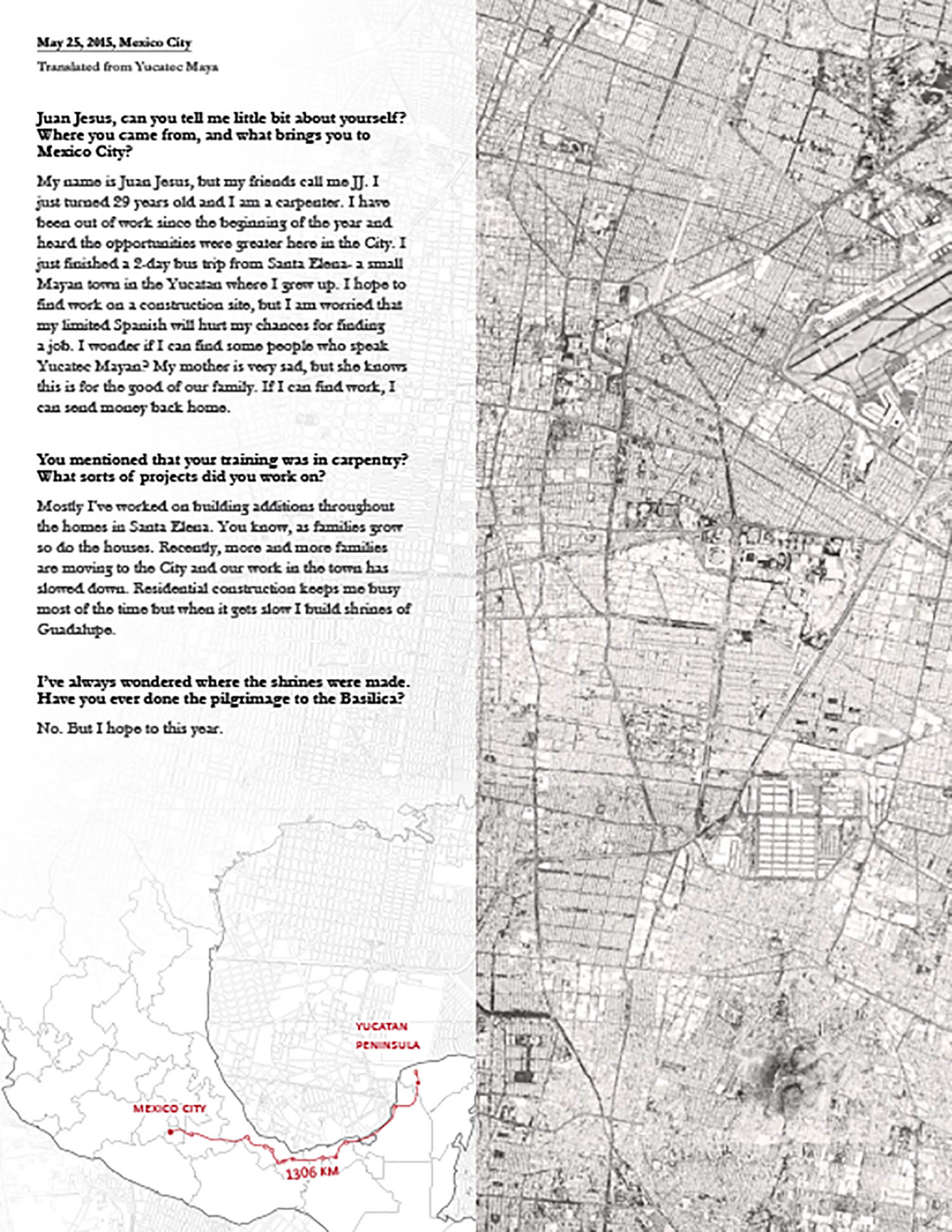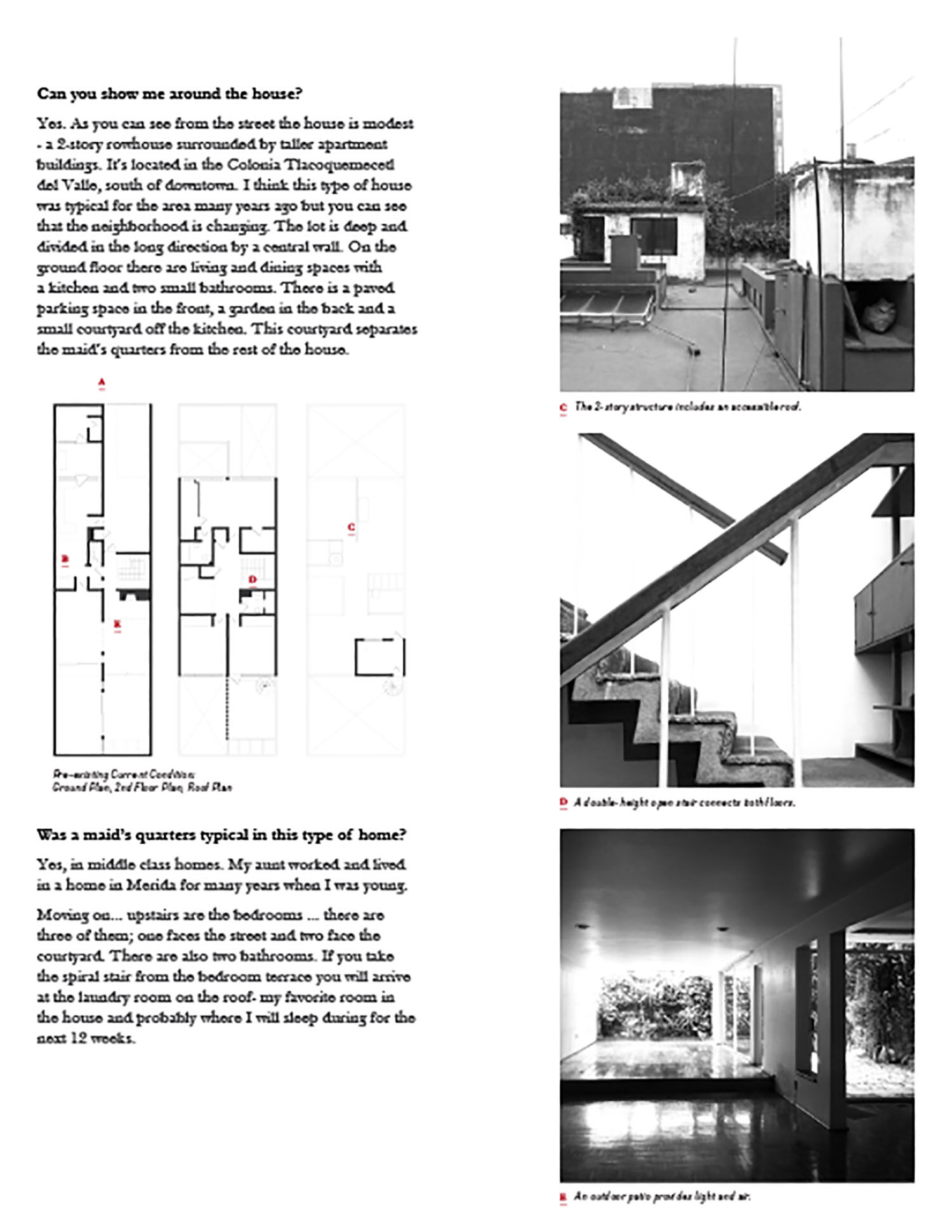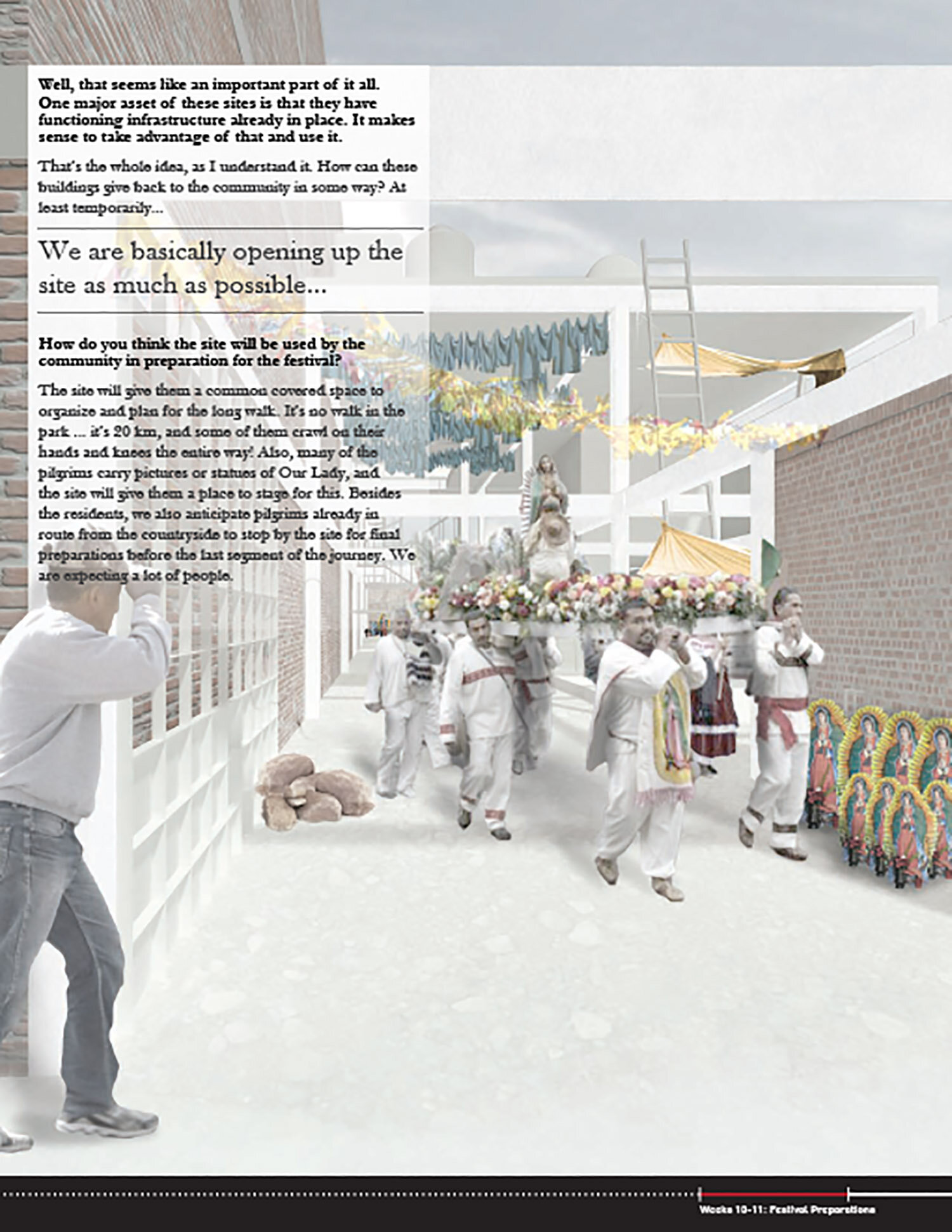Incentivized Temporary Occupation and Transformation of Underutilized Urban Land
Taking Buildings Down Call for Proposals: "In a design culture focused on the superlative (the tallest, the newest, the priciest), in which destruction is often perceived of or produced by an act of violence, the processes of removal appear as secondary concerns or collateral damage. However, if we are to better understand the life cycles of our built environment, we must explore the possibilities and implications of Taking Buildings Down. This competition of ideas is simultaneously a political act, a means of criticism, and a method of speculation. Taking Buildings Down asks proposals for the production of voids; the demolition of buildings, structures, and infrastructures; or the subtraction of objects and/or matter as a creative act. Removal is all that is allowed."
Our proposal was influenced and inspired by our previous Lineamientos installation project, located in the south of Mexico City, and continues the exploration of Gabrel Gonzales' University of Washington architecture thesis project entitled 'Unbuilt'. The following is our project statement: We are interested in how Demolition can serve as an effective planning tool that offers new possibilities for the city. In Mexico City, as single family residences are redeveloped into multi-family housing projects, there exists a mandatory 12-week vacancy period between when residents have vacated, and before the building is demolished. Incredibly, throughout this 12-week period there lives a caretaker on site whose sole job is to ensure that squatters do not take over the property.
We met one such person while visiting a site in the south of Mexico City. His name was Juan Jesus, or JJ for short. We were struck how lonely he must feel, and that there was nothing for him to do except sit in the house all day and night. We asked if we could get him something - a bed, a tv, books to read. His reply was simply “All I want to do is work”.
Meeting JJ and caretakers at other similar sites made us start to think about these sites as opportunities for temporary inhabitation and alternative activities, which could occupy the site between periods of demolition. But rather than allowing for informal, user-led appropriation, we propose a formalized “undevelopment” of such sites, one that considers and enrolls all stakeholders with incentives. What if the caretaker helped to carefully demolish the building in phases? What if the community was granted temporary occupation of the site? What if the owner/developer was given tax incentives to allow for this temporary occupation? What if the City could start to use these sites for infrastructure and emergency management in times of earthquake or flooding? Through a recognition of the political and economical considerations involved in the evolution of the city, there exists the opportunity for architects and the community to design the un-built.
JJ’s story served as the inspiration for our project. The social implications behind his involvement, and the opportunities that they represent to him as well as the public, challenged us to develop a project whose scope and application is far reaching. In honor of JJ, we have asked him to help tell our story.
2016 Storefront for Art & Architecture Taking Buildings Down Competition Proposal
Project by Robert Hutchison Architecture with Gabrel Gonzales & Cory Mattheis
Project Team: Scott Claassen, Gabrel Gonzales, Gregory Hicks, Robert Hutchison, Cory Mattheis
Location: Limas 15, Colonia Tlacoquemecatl del Valle, Mexico City
Photographer Credits:
Violeta Burckhardt, Gabrel Gonzales, Robert Hutchison, Cory Mattheis, Xavier de la Riva























